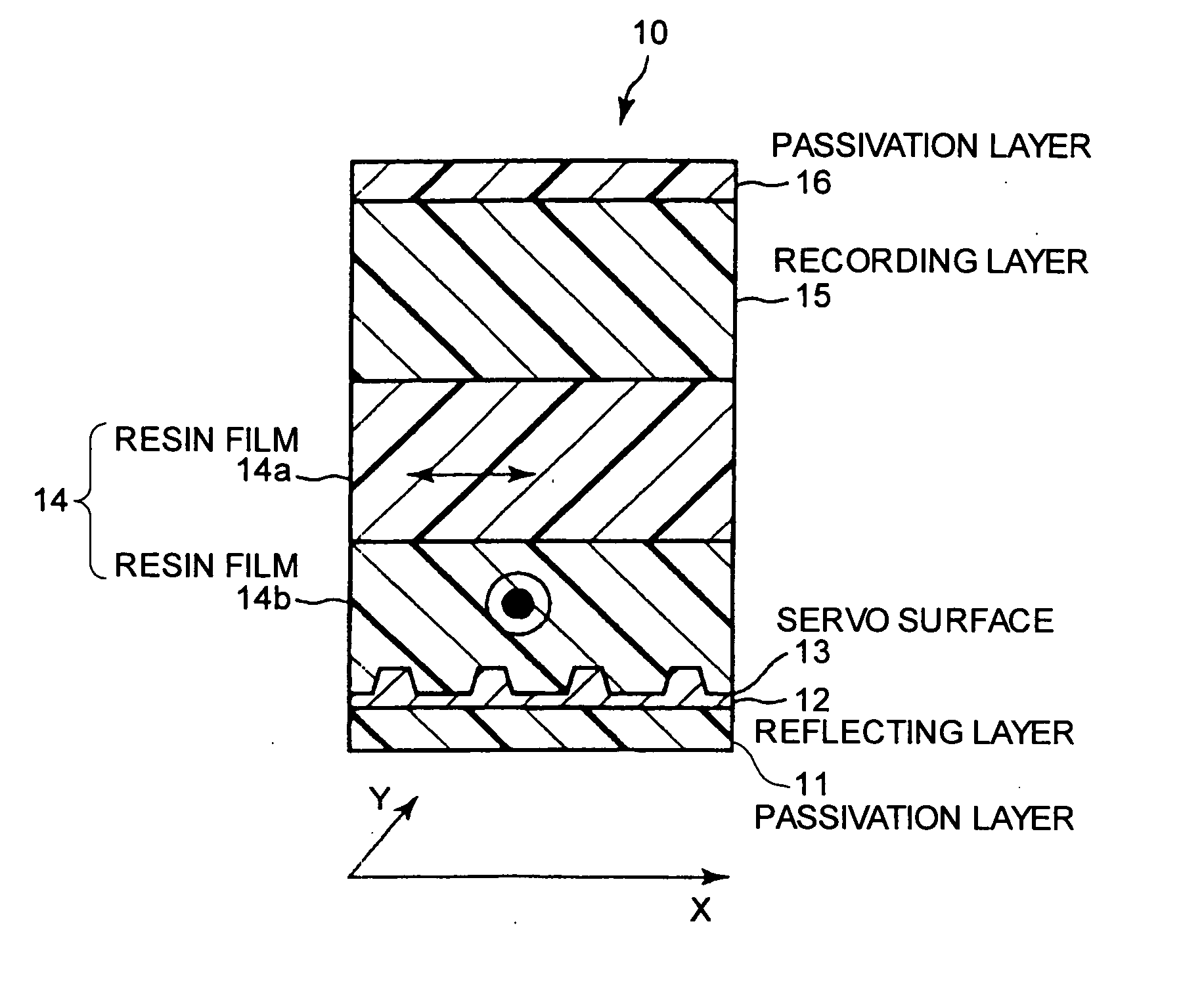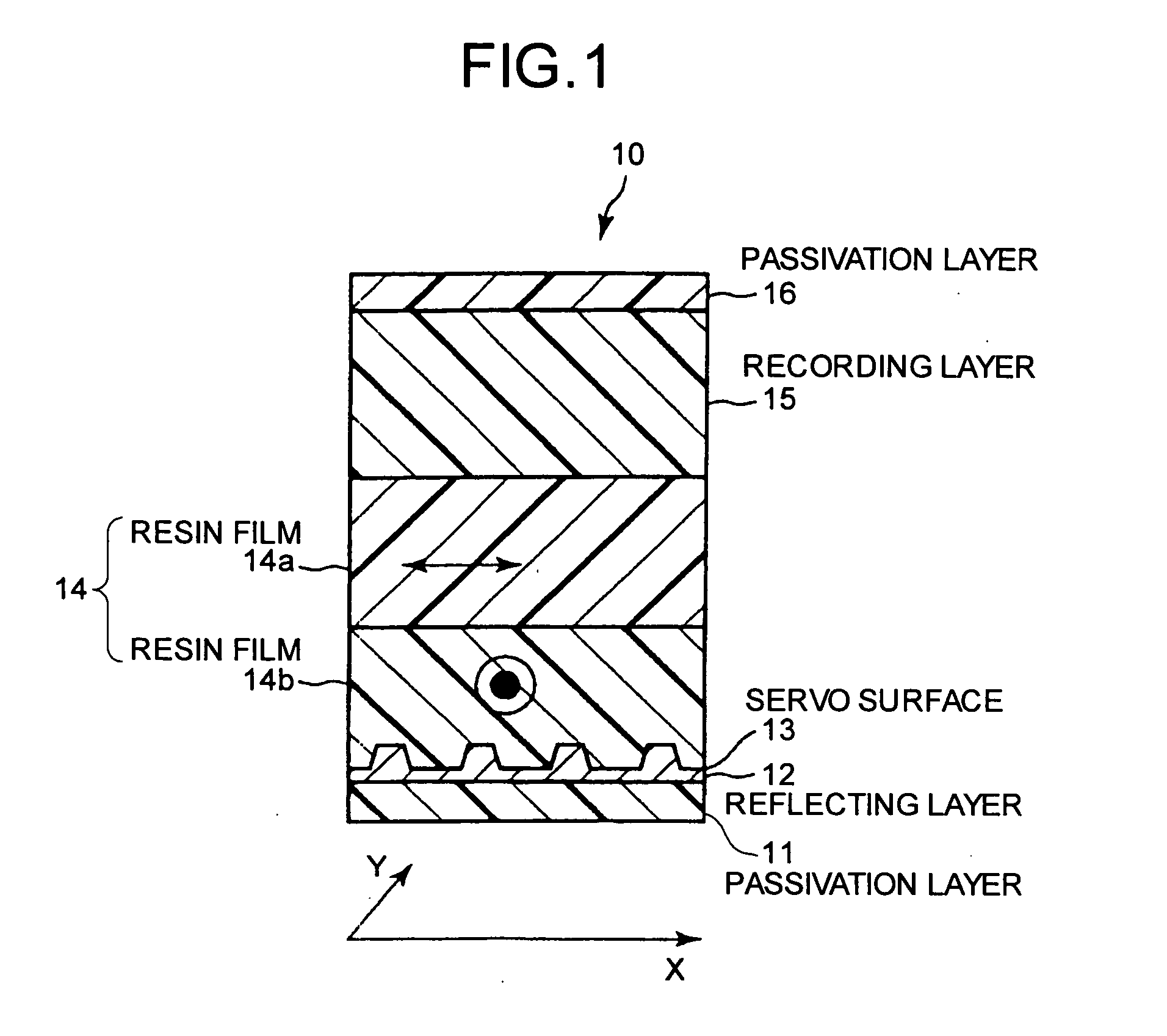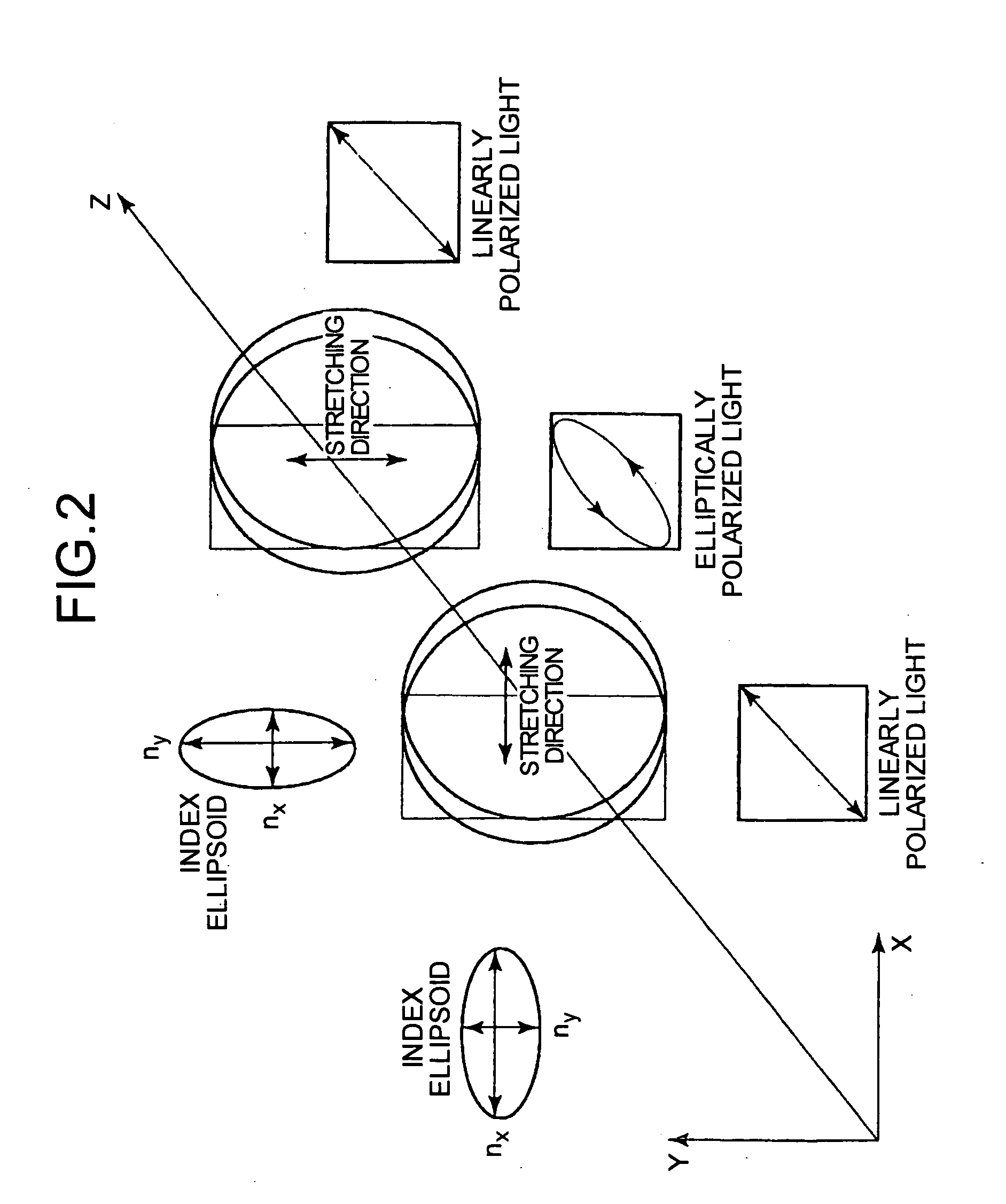Holographic recording medium and holographic recording medium manufacturing method
a technology of holographic recording medium and manufacturing method, which is applied in the direction of optical recording/reproducing/erasing methods, polarising elements, instruments, etc., can solve the problem of reducing the amplitude of interference patterns by reducing the birefringence of low birefringent plastic, causing a re-matching of the plane of polarization of the recording beam and the reference beam, and reducing the amplitude of interference patterns
- Summary
- Abstract
- Description
- Claims
- Application Information
AI Technical Summary
Benefits of technology
Problems solved by technology
Method used
Image
Examples
first example
[0104] An instance in which the recording layer consists of the photorefractive polymer will be explained.
[0105] Each component having the following formulation is dissolved in toluene to prepare a toluene solution for making a recording layer.
[0106] Charge generating material: [0107] Diethyl-1,2-methano(60)-flarene-61,61-dicarboxylate 0.2 wt %
[0108] Charge transporting material: [0109] N,N′-Diphenyl-N,N′-(2-naphthyl)-(1,1′-phenyl)-4,4″-diamine 30.0 wt %
[0110] Trapping material: [0111] N,N′-Diphenyl-N,N′-(2-naphthyl)-(p-terphenyl)-4,4″-diamine 10.0 wt %
[0112] Non-linear optical material: [0113] [[4-(Dimethylamino)phenyl]methylene]-2-methyl4-nitrobenzeneamine 40.0 wt %
[0114] Polymethyl methacrylate 19.8 wt %
[0115] Using the toluene solution, the holographic recording medium shown in FIG. 4 is manufactured.
[0116] Two polymethyl methacrylate films each having a thickness of 300 micrometers are prepared first, and stretched and oriented at a glass transition temperature or highe...
second example
[0125] In a second example, a holographic recording medium is manufactured by the same method as that used in the first example except that a similar transparent layer is further laminated on the organic recording layer.
[0126] The recording medium obtained is evaluated by the same recording and reproduction apparatus as that used in the first example. The RAW bit error rate is not lowered.
third example
[0129] In a third example, a recording layer is formed using the photopolymer.
[0130] Each component having the following formulation is blended to prepare a photopolymer material for making a recording layer.
Matrix material: Di(urethane-acrylate) oligomer63.83 wt %Monomer:Isobornyl acrylate 25.0 wt %Vinyl-1-naphthoate 10.0 wt %Photoinitiator: CG-784 1.0 wt %Decoloring agent: tert-Butyl-hydroxy peroxide 0.17 wt %
[0131] Using the photopolymer material obtained, a holographic recording medium in this example is manufactured. The recording medium manufactured herein is the same as that shown in FIG. 6 except that an intermediate layer is formed between the transparent layer 24 and the recording layer 15.
[0132] The photopolymer material is put between Teflon films and partially cured. Thereafter, the Teflon films are peeled off, thereby forming a photopolymer film. The photopolymer film has a refractive index of 1.62 relative to a light at 532 nanometers. This film is formed to be ro...
PUM
| Property | Measurement | Unit |
|---|---|---|
| operating wavelengths | aaaaa | aaaaa |
| thickness | aaaaa | aaaaa |
| thickness | aaaaa | aaaaa |
Abstract
Description
Claims
Application Information
 Login to View More
Login to View More - R&D Engineer
- R&D Manager
- IP Professional
- Industry Leading Data Capabilities
- Powerful AI technology
- Patent DNA Extraction
Browse by: Latest US Patents, China's latest patents, Technical Efficacy Thesaurus, Application Domain, Technology Topic, Popular Technical Reports.
© 2024 PatSnap. All rights reserved.Legal|Privacy policy|Modern Slavery Act Transparency Statement|Sitemap|About US| Contact US: help@patsnap.com










